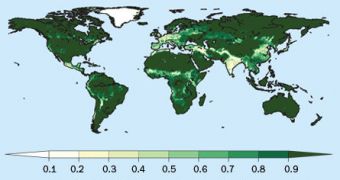Many people believe that our species began putting carbon dioxide into the atmosphere when the Industrial Revolution emerged, but the truth is that we have been doing this for 8,000 years.
Experts say that we started affected the environment long before the invention of the Steam engine, and other machines that used up coal, oil and other fossil fuels. A new study recalculates that amount of CO2 humans put into the atmosphere before modern time, and the estimates are unsettling.
New calculations indicate that more than 350 billion tons of carbon dioxide were released in the air starting 8,000 years ago and ending in 1850. Between the years 1850 and 2000, we released an additional 440 billion tons of the dangerous greenhouse gas.
Humans first began changing the environment when they started cutting down trees to make room for hunting and gathering grounds. With the advent of agriculture, around 10,000 BCE, land began being used for crops rather than game.
Vast numbers of trees were cut since then, all of which were contributing to regulating Earth's water, carbon and oxygen cycles, to name but a few. We are still doing the same thing today, except on a more massive scale, experts say.
“Our data show very substantial amounts of human impact on the environment over thousands of years,” explains Jed Kaplan, the leader of the research team and an expert at the Federal Polytechnic School in Lausanne, Switzerland.
“That impact really needs to be taken into account when we think about the carbon cycle and greenhouse gases,” he goes on to say, explaining that current estimates about how much CO2 people released in the air since they appeared on Earth are very wrong.
Together with Lausanne colleague Kristen Krumhardt, the expert authored a paper detailing the findings, which was accepted for publication in an upcoming issue of the esteemed journal Holocene.
Details of the study were already presented at an American Geophysical Union conference on March 25, Science News reports. Kaplan told attendants that the planet was not untouched by human hands in 1850, when the start of the Industrial Revolution is widely accepted as having taken place.
“Surprisingly, we find that when we include preindustrial emissions, the attribution of today’s CO2 increases goes up for countries like China and India and goes down for industrialized countries,” explains scientist Julia Pongratz.
The expert holds an appointment as a geographer at the Stanford, California-based Carnegie Institution for Science. “It’s important to turn to the past so we know what our actions mean for present-day and future climate,” she concludes.
Video Credit: ARVE Group
 14 DAY TRIAL //
14 DAY TRIAL //